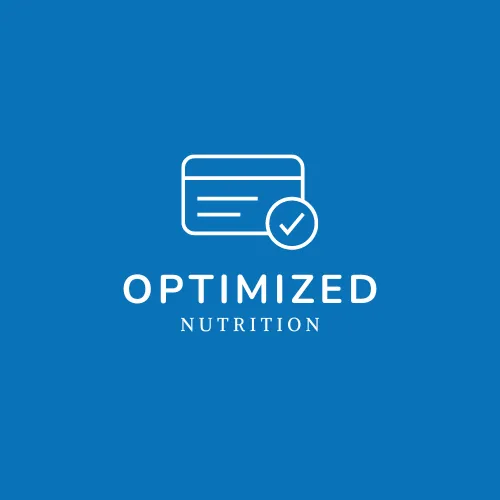Blog

Dietitian's Guide to Choosing Different Types of Yogurt
Whether your goal is to eat more protein, get in good sources of calcium or lose weight, yogurt can be a great addition to your next meal or snack. But if you have been down the yogurt aisle lately, you have probably seen lots of different types of yogurt. You might be wondering if yogurt is healthy or if it has too much sugar. As a registered dietitian, I can guide you through the clutter and help you find the yogurt that fits your nutrition goals.
Let’s start with what the basic kinds of yogurt are and how they differ in terms of their nutrition.
Yogurt 101
The yogurt aisle is made up of lots of different categories. Let’s explore some of the common types of yogurt that you will find at your local grocery store.
Basic
Basic yogurt comes in plain or flavored. Fruit is added to flavored yogurt and in some cases, sugar is also added for taste. Fat levels range from nonfat to full fat and are available either in a cup (single serving) or tub (multiple servings) format.
Greek
Greek yogurt has been strained to remove some of the water, lactose, and minerals. The result is a higher protein yogurt with a thicker texture. Note that because some of the lactose is removed, Greek yogurts are lower in calcium than some other types of yogurt. Just like basic yogurt, Greek yogurt also comes in plain or flavored and in either a cup or tub format.
Skyr
Skyr yogurt, also known as Icelandic yogurt, is a strained yogurt that is thicker and creamier than Greek yogurt. It takes about four cups of milk to make one cup of skyr yogurt which is why it contains more protein than other yogurts (and tends to be more expensive). Siggi’s and Icelandic Provisions are brands of skyr yogurt.
Drinkable Yogurt
Drinkable yogurt is popular in many countries including the US. It is produced in a similar way to yogurt where milk is cultured and fermented. Flavors and fruit purees are added for taste. You can find basic, Greek, Skyr, and plant-based drinkable yogurts in the dairy aisle. Drinkable yogurt is a great on-the-go breakfast or snack.
Plant-Based
Plant-based yogurts have become popular with increased interest in plant-based diets. Instead of using cow’s milk, plant-based yogurts are made from oat, soy, coconut, or cashew. The nutritional profile of plant-based yogurts varies depending on the main ingredients used to make the yogurt and the amounts of vitamins and minerals added (or not added). Plant-based yogurts are not inherently healthier than yogurt made from cow’s milk, but there are nutritious options if you are avoiding dairy. Let’s break down some of the different types of plant-based yogurts that you will find in your local grocery store.
Yogurt made from nuts such as cashews or almonds is higher in fat and saturated fat than low-fat or fat-free yogurts made from cow’s milk. These yogurts are also lower in protein like other plant-based yogurts. Kite Hill and Forager are two brands to try.
Oat yogurt is made from oats and has added oils and thickeners to improve the texture. They also have added pea protein but are still pretty low in protein with only 3–4 grams per serving. Oatly has plain and flavored oat yogurt varieties.
Soy yogurt is made from soymilk and has the most protein of all plant-based yogurts. Silk has several different flavors as well as Greek-style soy yogurts.
Coconut yogurt is higher in total fat and saturated fat compared with yogurt made from cow’s milk. Unless it has added vitamin D and calcium, you won’t find it in coconut yogurt. So Delicious makes several different varieties of yogurt. Siggi’s, who makes Skyr yogurt, also has a plant-based coconut version.
What should I look for when buying yogurt?
When looking at individual yogurt options, there is a lot to review. How do you know what yogurt is best for you? These are the things that I recommend you look at before picking a yogurt.
Protein
Look for a brand with at least 5–10 grams of protein to help keep you satisfied longer. Keep in mind that plant-based yogurts have less protein than traditional yogurts, especially Greek and skyr yogurt. So, if you are having yogurt for breakfast, make sure that you have other sources of protein such as nuts, seeds, or nut butters to ensure that you get enough protein to help stay satisfied and full longer.
Sugars and Sweeteners
Added sugars and sweeteners balance the tartness of yogurt and add flavor. Try to keep the added sugars as low as possible. In some cases, alternative sweeteners such as sucralose, monk fruit, or stevia are added for sweetness without the calories. These alternative sweeteners have a distinct taste, so choose what you prefer.
Other Ingredients
Review the ingredients list. A lot of yogurts, especially plant-based ones have added oils or thickeners such as locust bean gum or tapioca starch to help with texture and consistency. Depending on your preferences, you may be okay with these ingredients. But If your goal is to consume less processed foods, avoid yogurts with these added ingredients.
Calcium
Check the label for calcium. We tend to not get enough calcium daily so choose a yogurt that is at least 10% of the daily value (DV) for calcium. You’ll look on the nutrition facts panel to see how much calcium one serving of yogurt provides.
Taste
As a dietitian, we don’t just look at food in terms of its nutrition. Food also is something to be enjoyed! So my final parameter is to consider if you like the yogurt.
That’s a wrap!
Yogurt can be a really healthy part of your daily meals. Remember: keep the protein high, the added sugars low, and find a flavor that you love.
Do you have a favorite yogurt that meets these guidelines? Comment below.

